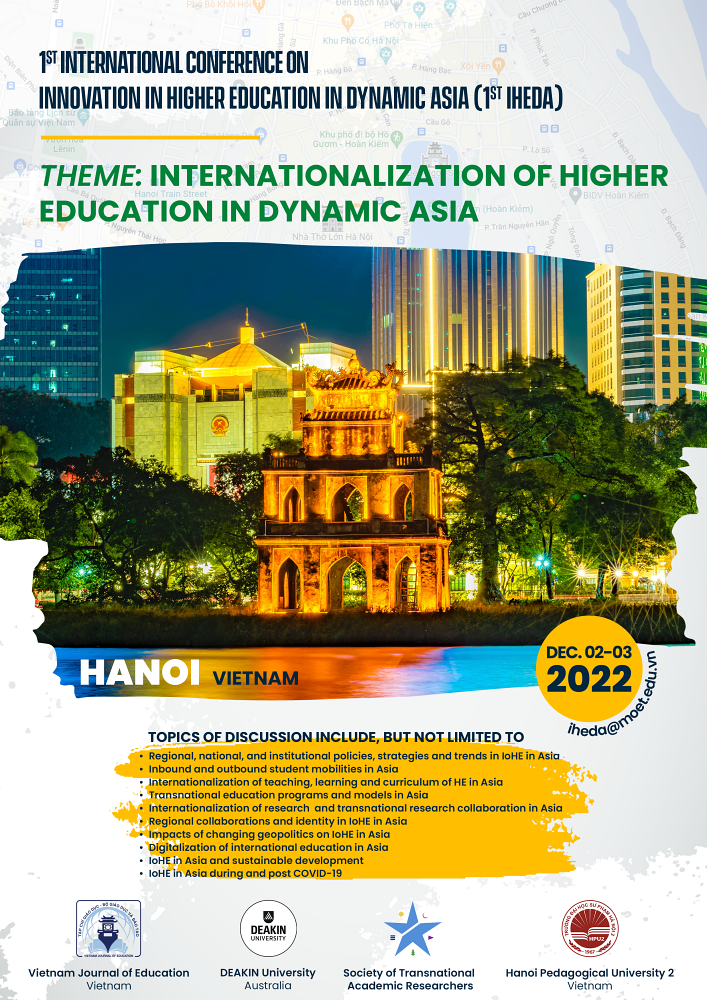Students’ evaluation of using Google Classroom in project-based learning in faculty of English, Hanoi National University of Education
DOI:
https://doi.org/10.52296/vje.2019.41-
Downloads
How to Cite
Abstract
Traditional classroom has so far been a common place for learning almost all school subjects and courses of different fields. In language teaching and learning within the 21st century context, the use of Google Classroom is not new, so is the research on the benefits and barriers of this virtual academic place. Being used as a supportive device for teaching and learning in several subjects over the past semesters, “Google Classroom” has become a familiar term among English majors in the Faculty of English, Hanoi National University of Education. This proposed study will explore the applications of this virtual academic environment in project-based learning, focusing on investigating students’ perspectives on its advantages and disadvantages, as well as their expectations and suggestions for an optimal use.
Downloads
References
Blumenfeld, P., et al. (1991). Motivating project-based learning: Sustaining the doing, supporting the learning. Educational Psychologist, 26(3-4), 369-398.
Cambridge Dictionary. Blended learning. Retrieved on July 8, 2018 from https://dictionary.cambridge.org/dictionary/english/blended-learning
De Bono, E. (1970). Lateral thinking: creativity step by step. Harper & Row, pp. 300.
H Larmer, J., Mergendoller, J., Boss, S. (2015). Setting the Standard for Project Based Learning: A Proven Approach to Rigorous Classroom Instruction. ASCD 2015.
Iftakhar, S. (2016). Google classroom: What works and how?. Journal of Education and Social Sciences, 3(1), 12-18.
ISO/IEC 9126-1:2001, Software Engineering Product Quality - Part 1: Quality Modell, Int’l Organization for Standardization, 2001.
McGrath, I. (2013). Teaching Materials and the Roles of EFL/ESL Teachers: Practice and Theory. A&C Black.
Pekanbaru, Y. A. (2018). Using Google Classroom as an Effective Way to Collect Students’ Assignments. Journal AKRAB JUARA, 3(1), 142-149.
Reay, J. (2001). Blended learning: A fusion for the future. Knowledge Management Review, 4(3), 1-6.
Rooney, J. E. (2003). Blending learning opportunities to enhance educational programming and meetings. Association Management, 55(5), 26-32.
The Benefits and Barriers of Using Google Classroom in Language Learning: A Study at Singapore School, Pantai Indah Kapuk. Retrieved on July 20, 2018 from https://www.slideshare.net/dwiazhari/the-benefits-and-barriers-of-using-google-classroom-in-language-learning-a-study-at-singapore-school-pantai-indah-kapuk




















